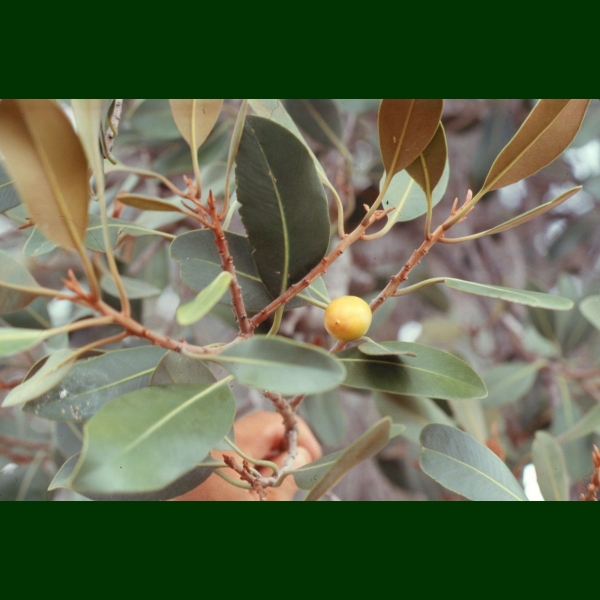 Hawaiian Name(s): ‘āla‘a, āulu, ‘ēla‘a, kaulu
Hawaiian Name(s): ‘āla‘a, āulu, ‘ēla‘a, kauluScientific Name: Pouteria sandwicensis
Vernacular Name: none
Family: Sapotaceae
Status: endemic
Authority: (A.Gray) Baehni & O.Deg.
Description: Shrubs or trees, to 12 m, milky sap.
Habitat P. sandwicensis occurs in dry to mesic forest and diverse mesic forest between 240–980 m on all main islands except Ni‘ihau and Kaho‘olawe (Wagner 1990:1233–1234).
Medicines: The leaves and bark of the ‘āla‘a tree are combined with ‘ōolena root (Cucurma longa), and salt as an ointment for the treatment of wela kupuni and ‘ea kamanawa (Chun 1994:30).
Non Medicinal Uses: The hard wood used as ‘o‘o (digging sticks), spears, and house posts; sap used to catch birds (Wagner et al. 1990:1234). The wood also used for gunwales of canoes (Krauss 1993:50).
Specific gravity of wood: unknown
Famous Locations:
Mele:
`Ōlelo Noeau:
Dye Color and Parts:
Kino lau:
Location on Bishop Museum Kalihi Campus:
Propagation Information: Intermediate. Seeds sprout in 1-2 months; test for diseased seeds by squeezing for firmness, quickly discard diseased seeds to prevent fungus from spreading; don't use shallow pot or tap root will coil & young plants should be planted out soon; grows slowly initially (Culliney and Koebele 1999:48–50).
Native Plants Hawaii.
Seed: Seed length approximately 9 mm. Photograph: B.Kennedy.

Microscopy
Cross Section: Field of view: 2.6 mm x 1.6 mm. Photograph: H.Lennstrom.

Radial Section: Field of view: 2.6 mm x 1.6 mm. Photograph: H.Lennstrom.

Tangential Section: Field of view: 2.6 mm x 1.6 mm. Photograph: H.Lennstrom.

